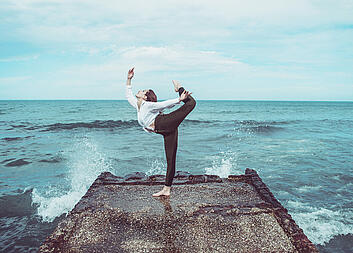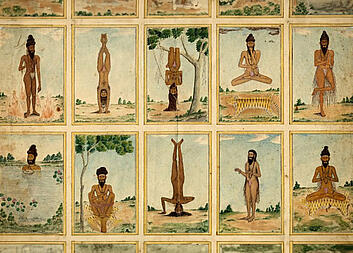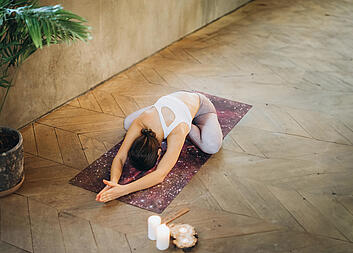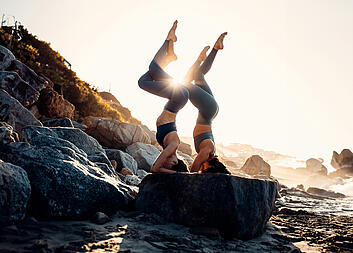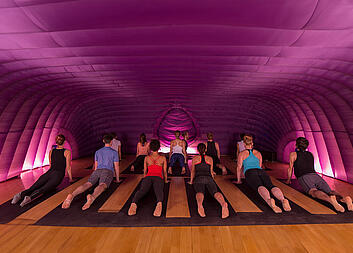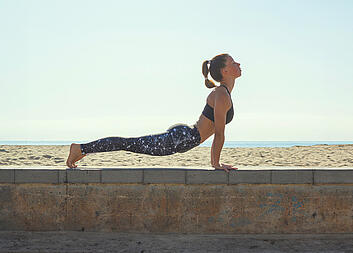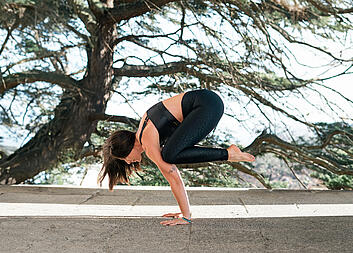Yoga has no single inventor; it is an ancient spiritual and physical practice system that has been developed over thousands of years in India. The origins of yoga date back to pre-Vedic times (3000 BC and earlier) and it has evolved over the centuries through various cultural and religious influences.
The history of yoga
From the ancient sages to the modern world - the exciting history of yoga.

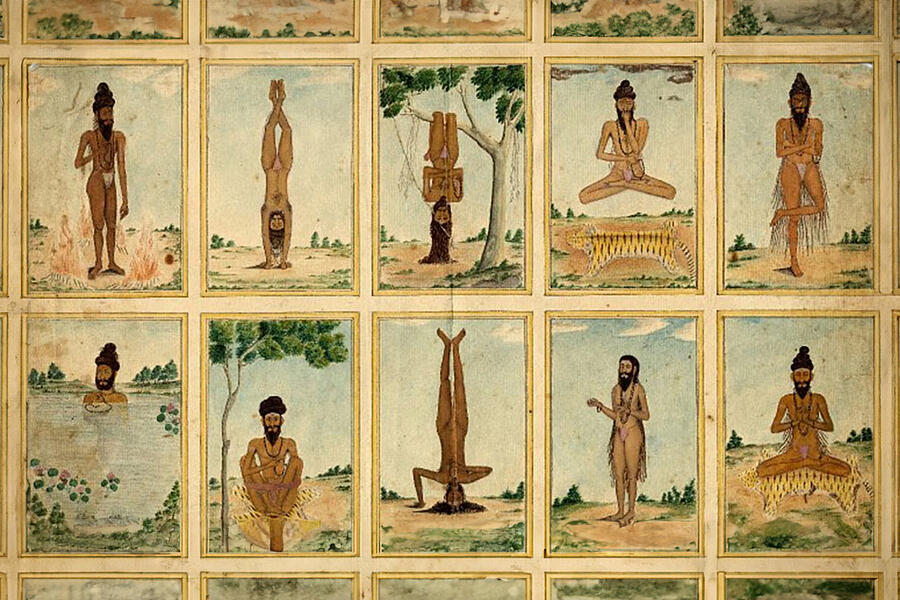
Historical development and key figures:
- Indus Valley Civilisation: archaeological finds such as the Pashupati seal (around 3000 BC) indicate early forms of yoga practices.
- Vedas and Upanishads: The earliest written references to yoga are found in the Vedas (1500-500 BC) and the Upanishads (later part of the Vedic literature). Concepts such as meditation and spiritual disciplines were discussed in these texts.
- Mahabharata and Bhagavad Gita: In the Bhagavad Gita, part of the Mahabharata (ca. 500-200 BC), Krishna teaches Prince Arjuna about various yoga paths such as karma yoga (yoga of action), bhakti yoga (yoga of devotion) and jnana yoga (yoga of knowledge).
- Patanjali: One of the central figures in the history of yoga is the sage Patanjali, who wrote the ‘Yoga Sutras’ around the 2nd century BC. This work systematised the practice of yoga and laid the foundation for what is known today as Raja Yoga or Ashtanga Yoga.
- Hatha Yoga Pradipika: Another important text for modern yoga practice is the ‘Hatha Yoga Pradipika’ by Swami Swatmarama from the 15th century. This work describes the physical exercises and breathing techniques that are practised in modern hatha yoga.
Yoga has a rich and fascinating history that goes back thousands of years. Originating in India, yoga is a practice that combines physical, mental and spiritual aspects. The first references to yoga can be found in the ancient scriptures of the Vedas, which were written around 1500 BC. These scriptures contain hymns, mantras and rituals that form the basis of the Vedic traditions.
Over time, yoga developed further and was deepened in the Upanishads, a collection of philosophical texts. These texts emphasised meditation and inner experience. Another important milestone in the history of yoga is the Bhagavad Gita, an epic poem that discusses various paths of yoga and plays a central role in yoga philosophy.
Bhagavad Gita: A guide to wisdom and enlightenment
The Bhagavad Gita, often simply referred to as the Gita, is a 700-verse poem in Sanskrit and part of the Mahabharata. It consists of a dialogue between Prince Arjuna and the god Krishna, who serves as his charioteer. This conversation takes place on the battlefield of Kurukshetra, where Arjuna faces moral and spiritual doubts.
Main Themes of the Bhagavad Gita:
Dharma (Duty): Krishna explains to Arjuna the importance of fulfilling his duty as a warrior while also adhering to the principle of justice.
Yoga (Path): The Gita describes various types of Yoga as means to self-realization:
- Karma Yoga: The path of selfless action
- Bhakti Yoga: The path of devotion
- Jnana Yoga: The path of knowledge
Moksha (Liberation): The ultimate goal is liberation from the cycle of birth and death through the realization of the true nature of the self and unity with the Divine.
Key Chapters and Verses:
- Chapter 2: Sankhya Yoga – The Essence of the Self
- Chapter 3: Karma Yoga – The Path of Selfless Action
- Chapter 9: Raja Vidya Raja Guhya Yoga – The Royal Knowledge and the Royal Secret
- Chapter 12: Bhakti Yoga – The Path of Devotion
- Chapter 18: Moksha Sannyasa Yoga – The Path of Liberation and Renunciation
Central Teachings:
- Self-Knowledge: Recognize your true self, which is immortal and eternal.
- Action without Attachment: Perform your duties without attachment to the results of your actions.
- Equanimity: Maintain calmness in success and failure.
The Bhagavad Gita offers valuable insights and guidance for a spiritually fulfilling life and is considered by many as a guide to self-realization and inner harmony.
The Yoga Sutras were written by Patanjali around 200 BC to 400 AD and are considered one of the fundamental texts of yoga. Patanjali describes yoga as a system of spiritual discipline and introduces the eight limbs of yoga, which still characterise the practice today.
In the 15th century, the Hatha Yoga Pradipika was written, a work focussing on physical exercises and breathing techniques. This work formed the basis for many modern yoga practices that are widespread around the world today.
Modern development:
In the 19th and 20th centuries, Indian yogis such as Swami Vivekananda, Paramahansa Yogananda and T. Krishnamacharya brought yoga to the West and contributed to its worldwide spread. Their students, including B.K.S. Iyengar and Pattabhi Jois, developed specific yoga styles that are popular today.
Summary:
Yoga is the result of collective wisdom and practice that has been developed and refined over thousands of years by many cultures and spiritual traditions. There is no single person who can be recognised as the inventor of yoga, but many sages and teachers who have contributed to its development and spread. Today, yoga is a global movement practised by millions of people to find physical health, mental well-being and spiritual fulfilment.
More on Yoga
